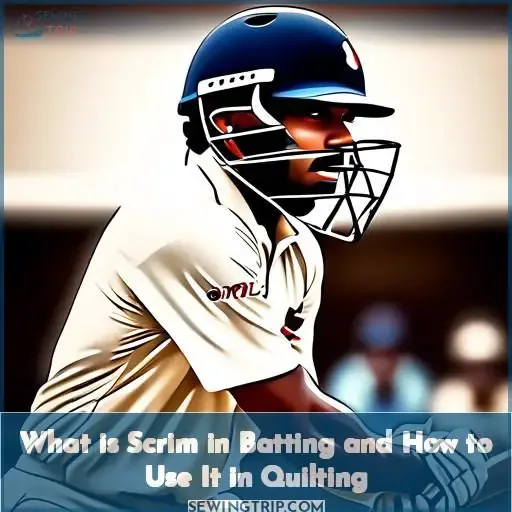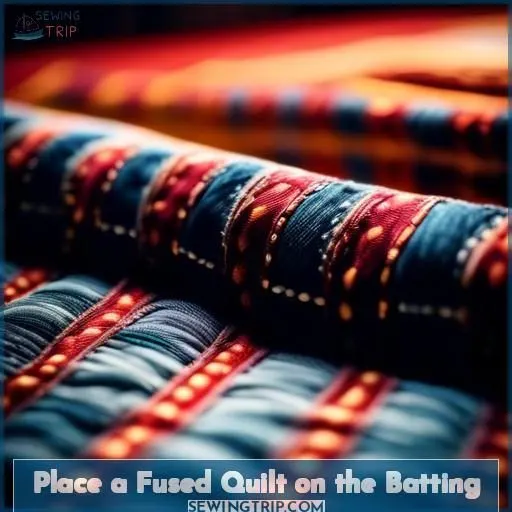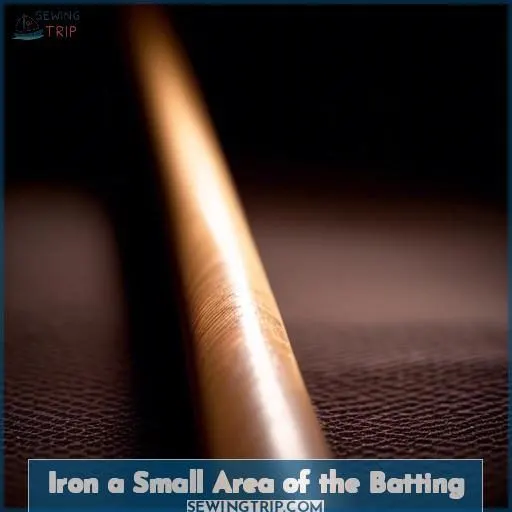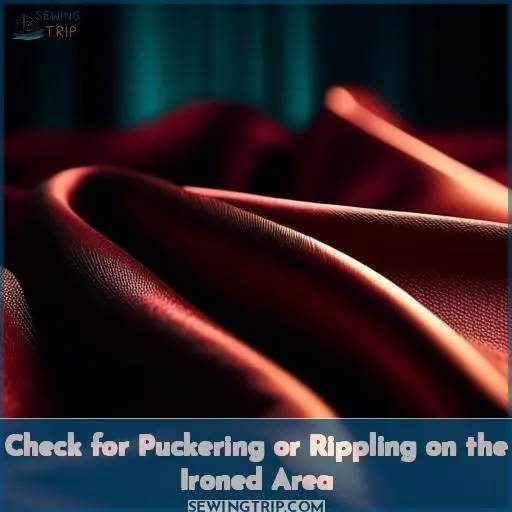This site is supported by our readers. We may earn a commission, at no cost to you, if you purchase through links.

Scrim in batting is a reinforcing mesh layer that provides stability and support to your quilt. When working with batting, you’ll want to identify the scrim side by feeling for its rough texture. Place the quilt with the scrim side facing up to create a stable foundation.
Scrim helps prevent batting from shifting or puckering, ensuring your quilt lays flat and wrinkle-free. While finding scrim may be slightly inconvenient, the benefits often outweigh the small effort.
Want to learn more about properly using scrim to enhance your quilting projects? Keep reading to discover additional tips and techniques.
Table Of Contents
Key Takeaways
- Scrim in batting is a reinforcing mesh layer that provides stability and support to quilts.
- To use scrim effectively, identify its rough texture and place the quilt with the scrim side facing up.
- Scrim helps prevent batting from shifting or puckering, ensuring the quilt stays flat and wrinkle-free.
- The benefits of using scrim in batting often outweigh the small effort required, making it a valuable tool for quilters.
What is Scrim in Batting?
Scrim is a thin layer of woven fibers or glue that acts as a stabilizer in batting. It holds the cotton in the middle of the batting in place and prevents it from shifting when washed. Scrim is usually found on the top and bottom of many types of cotton batting.
It is a sheer piece of polyester or glue that helps quilters achieve less quilting, sometimes up to 10 inches apart. Without a scrim, quilters using cotton batting have to quilt about 1/2 inch to 1 inch apart to prevent the cotton from shifting. Scrim allows quilters to quilt farther apart and helps prevent the batting from stretching.
Place a Fused Quilt on the Batting
To place a fused quilt on the batting, follow these steps:
- Lay the fused quilt on top of the batting, making sure that the scrim side of the batting is facing upwards. This is important because the scrim side is rougher and scratchier, and it will provide a stable base for your quilt.
- Press the fused quilt gently onto the batting, making sure that all edges are aligned and that there are no wrinkles or gaps between the quilt and the batting.
- Smooth out any air bubbles or wrinkles, and make sure that the quilt is lying flat on the batting. This will help prevent any puckering or rippling of the quilt surface later on.
- Once the quilt is properly positioned, you can begin quilting. Remember to quilt against the grain to prevent batting pokies, and use chemical scrims to contain batting bits and prevent pokies.
- After quilting, check the quilt surface for any puckering or rippling. If you notice any issues, you may need to reverse the quilt and adjust the batting placement.
Iron a Small Area of the Batting
To iron a small area of the batting, start by ensuring the batting is on a flat surface and the iron is set to a low heat. Gently press the iron onto the batting, applying even pressure and moving it in a circular motion. Be careful not to press too hard or too long in one spot, as this can cause the scrim to become visible.
If the scrim is too thick or the batting too durable, consider using a scrim alternative or adjusting the iron’s heat setting. Scrim cost and availability may vary, but the benefits of using scrim in quilting, such as batting stability and durability, often outweigh the potential inconvenience.
Check for Puckering or Rippling on the Ironed Area
After ironing, inspect the area closely. If you spot puckering or rippling, you’ve likely hit the scrim side. It’s a bit like finding the wrong side of a sock—uncomfortable and just not right.
To prevent this quilting faux pas, remember scrim identification is crucial. Feel for the scrim’s rough texture before fusible placement.
This simple rippling detection step guarantees your batting behaves, and your quilt stays flat and fabulous, without a pucker in sight.
Frequently Asked Questions (FAQs)
What is the difference between cotton batting with and without scrim?
Cotton batting with scrim is firmer and more stable, while cotton without scrim feels softer and loftier. The scrim adds structure but can reduce softness, so choose based on your quilting needs.
How does scrim affect the quilting process, especially in terms of quilting spacing and needle movement?
Scrim provides batting stability, letting you space your quilting wider apart. But watch out – the rougher scrim side can cause uneven stitching, so always stitch against the nap. Find the sweet spot for your quilting needs.
Can scrim be used for hand quilting, or is it best suited for machine quilting?
You can certainly use scrim for hand quilting, but it works better for machine quilting. Scrim adds stability and helps maintain wider quilting spacing, which is less essential for hand quilting. Choose batting with or without scrim based on your specific needs.
How does the presence of scrim affect the softness and coziness of the batting?
The presence of scrim can make batting feel a tad stiffer and less cuddly, but don’t fret – you can find the perfect balance by mixing scrim and non-scrim batting to suit your cozy needs.
How can one identify the scrim side of the batting, and what are the potential consequences of fusing quilt fabric to the scrim side?
You can identify the scrim side by its rough, pill-like texture. Fusing to the scrim side will cause puckering and a rippled quilt surface – stick to the soft, fluffy non-scrim side for a smooth finish.
Conclusion
When all is said and done, getting a handle on scrim in batting can be a game-changer for your quilting projects. By placing the quilt with the scrim side facing up, you’ll create a stable foundation that prevents batting from shifting or puckering, ensuring your quilt lays flat and wrinkle-free.
The benefits of using scrim in batting far outweigh the small effort required, so don’t let this essential quilting technique slip through the cracks. Mastering the use of scrim is a surefire way to take your quilting skills to new heights.









